Key Takeaways
1. Energy: The Foundation of Modern Civilization
Energy is not just another component in the complex structures of the biosphere, human societies, and their economies, nor just another variable in intricate equations determining the evolution of these interacting systems. Energy conversions are the very basis of life and evolution.
Energy drives progress. The history of human civilization is closely tied to our ability to harness and convert energy. From the early use of fire to the modern reliance on fossil fuels, energy has been the driving force behind technological advancements and societal development. The transition from muscle power to mechanical energy, and later to electrical power, has dramatically increased our productive capabilities and standard of living.
Fossil fuels dominate. Despite the growing emphasis on renewable energy sources, fossil fuels still account for about 84% of global primary energy supply. This dependence poses significant challenges for addressing climate change and ensuring long-term energy security. The transition to a low-carbon energy system is necessary but will take time due to the enormous scale of existing infrastructure and the need for technological advancements in areas such as energy storage.
Key energy transitions:
- Wood to coal (19th century)
- Coal to oil (20th century)
- Growing emphasis on natural gas and renewables (21st century)
Challenges for the future:
- Decarbonization of the energy sector
- Improving energy efficiency
- Developing new energy storage technologies
- Balancing energy security with environmental concerns
2. Food Production: Eating Fossil Fuels
Modern food production, be it field cultivation of crops or the capture of wild marine species, is a peculiar hybrid dependent on two different kinds of energy.
Fossil fuels feed the world. Modern agriculture is heavily dependent on fossil fuels, not just for powering farm machinery but also for producing fertilizers, pesticides, and other agrochemicals. This reliance has enabled a dramatic increase in food production, supporting a growing global population, but it also raises concerns about the long-term sustainability of our food systems.
Energy-intensive food chain. The energy costs of food production extend far beyond the farm. Processing, transportation, packaging, and retail all contribute to the overall energy footprint of our food. For example, producing a kilogram of bread requires about 250 milliliters of diesel fuel equivalent, while chicken meat production can use up to 1 liter of fuel equivalent per kilogram.
Energy inputs in modern agriculture:
- Direct use: Fuel for machinery, irrigation pumps
- Indirect use: Fertilizer and pesticide production, food processing, transportation
Challenges:
- Reducing fossil fuel dependence in agriculture
- Balancing food security with environmental concerns
- Addressing food waste to improve overall efficiency
3. Four Pillars of Modern Civilization: Ammonia, Steel, Plastics, and Cement
Four materials rank highest on this combined scale, and they form what I have called the four pillars of modern civilization: cement, steel, plastics, and ammonia.
Material foundations. These four materials are essential for the functioning of modern societies, required in larger quantities than other inputs and not easily replaceable. Their production, however, is heavily dependent on fossil fuels and contributes significantly to global CO2 emissions.
Scale and impact. The sheer scale of production for these materials is staggering. In 2019, the world consumed about 4.5 billion tons of cement, 1.8 billion tons of steel, 370 million tons of plastics, and 150 million tons of ammonia. Their production accounts for about 17% of the world's primary energy supply and 25% of all CO2 emissions from fossil fuel combustion.
Key facts:
- Ammonia: Essential for fertilizer production, feeding about 40% of the global population
- Steel: Ubiquitous in construction, transportation, and manufacturing
- Plastics: Versatile materials used in countless applications, from packaging to medical devices
- Cement: The key ingredient in concrete, the most widely used man-made material
Challenges:
- Developing low-carbon production methods
- Improving recycling and material efficiency
- Finding sustainable alternatives where possible
4. Globalization: Engines, Microchips, and Beyond
Globalization manifests itself in countless quotidian ways.
Technological enablers. The progress of globalization has been driven by advancements in transportation and communication technologies. From steam engines to container ships, and from telegraphs to the internet, these innovations have dramatically reduced the costs and increased the speed of moving goods, people, and information across the globe.
Complex interdependencies. Modern globalization has created intricate global supply chains and financial networks. This interconnectedness has brought economic benefits but also increased vulnerabilities to disruptions, as demonstrated by the COVID-19 pandemic. The process of globalization is not inevitable or irreversible, and recent years have seen some retreat from peak levels of global integration.
Key phases of globalization:
- Sail-powered trade (15th-19th centuries)
- Steam-powered globalization (19th-early 20th century)
- Fossil fuel-driven expansion (mid-20th century)
- Digital globalization (late 20th-21st century)
Current challenges:
- Balancing economic benefits with national security concerns
- Addressing inequalities created by globalization
- Managing environmental impacts of global trade
- Adapting to technological disruptions (e.g., automation, AI)
5. Understanding and Quantifying Risks
De omnibus dubitandum (Doubt everything) must be more than a durable Cartesian quote; it must remain the very foundation of the scientific method.
Risk perception vs. reality. People often misperceive risks, overestimating the danger of rare but dramatic events while underestimating more common hazards. This disconnect between perceived and actual risks can lead to poor decision-making at both individual and societal levels.
Quantifying risk. Understanding and comparing risks requires careful analysis and appropriate metrics. One useful approach is to express risks in terms of fatalities per person per hour of exposure, which allows for more meaningful comparisons across different activities and hazards.
Examples of risk comparisons:
- Driving: 5 × 10^-7 fatalities per hour of exposure
- Flying (commercial aviation): 2.8 × 10^-8 fatalities per hour of exposure
- Base jumping: 4 × 10^-2 fatalities per jump
Factors influencing risk perception:
- Voluntariness (voluntary vs. involuntary risks)
- Familiarity
- Control
- Catastrophic potential
- Media coverage
6. Environmental Challenges: Climate Change and Resource Management
The real concern about plant nutrients is the environmental (and hence economic) consequences of their unwanted presence in the environment, mostly in water.
Complex environmental issues. Environmental challenges facing humanity are multifaceted, involving intricate interactions between human activities and natural systems. Climate change, resource depletion, pollution, and biodiversity loss are interconnected problems that require comprehensive solutions.
Climate change understanding. The basic science of climate change has been understood for over a century, with early warnings about the potential consequences of increased atmospheric CO2 dating back to the late 19th century. Despite this long-standing knowledge, effective global action to address climate change has been slow and insufficient.
Key environmental challenges:
- Climate change and its diverse impacts
- Water scarcity and pollution
- Soil degradation and nutrient management
- Biodiversity loss
- Ocean acidification
Barriers to action:
- Economic and political inertia
- Short-term thinking vs. long-term consequences
- Complexity of global coordination
- Technological and infrastructural lock-in
7. Future Outlook: Between Apocalypse and Singularity
Being agnostic about the distant future means being honest: we have to admit the limits of our understanding, approach all planetary challenges with humility, and recognize that advances, setbacks, and failures will all continue to be a part of our evolution and that there can be no assurance of (however defined) ultimate success, no arrival at any singularity—but, as long as we use our accumulated understanding with determination and perseverance, there will also not be an early end of days.
Avoiding extremes. When considering the future, it's important to avoid both overly apocalyptic and excessively optimistic scenarios. Reality is likely to fall somewhere between these extremes, shaped by a combination of ongoing trends, unexpected events, and human choices.
Uncertain path forward. The future remains inherently unpredictable, influenced by complex interactions between technological, social, economic, and environmental factors. While we face significant challenges, particularly in addressing climate change and managing resource constraints, human ingenuity and adaptability offer reasons for cautious optimism.
Key considerations for the future:
- Balancing technological progress with environmental sustainability
- Addressing global inequalities and ensuring inclusive development
- Managing the transition to a low-carbon economy
- Adapting to demographic changes and urbanization
- Navigating geopolitical shifts and ensuring global cooperation
Potential game-changers:
- Breakthroughs in clean energy technologies
- Advances in artificial intelligence and automation
- Developments in biotechnology and medicine
- Unforeseen global events (e.g., pandemics, natural disasters)
Human's Ending Note: This concise adaptation captures the key insights and arguments from Vaclav Smil's book "How the World Really Works," providing a comprehensive overview of the complex systems and challenges that shape our modern world. By focusing on energy, materials, food production, globalization, risk, and environmental issues, it offers readers a nuanced understanding of the interconnected nature of human civilization and the biosphere. The adaptation emphasizes the importance of a balanced, evidence-based approach to addressing global challenges, avoiding both undue pessimism and unrealistic optimism about the future.
Last updated:
FAQ
What's How the World Really Works about?
- Fundamental realities: The book explores essential processes that govern survival and prosperity, focusing on energy, food production, materials, globalization, risks, and the environment.
- Interdisciplinary approach: Vaclav Smil combines insights from physics, chemistry, biology, and history to provide a comprehensive understanding of modern civilization.
- Existential necessities: The topics covered are critical for understanding the challenges humanity faces in the 21st century.
Why should I read How the World Really Works?
- Comprehension deficits: Smil aims to reduce misunderstandings about how the modern world functions, making it accessible to non-specialists.
- Informed decision-making: The book equips readers to engage in discussions about energy, food, and environmental policies, fostering informed public discourse.
- Realistic perspective: Smil provides a grounded analysis of current systems, encouraging critical thinking without sensational predictions.
What are the key takeaways of How the World Really Works?
- Fossil fuel dependence: Modern civilization relies heavily on fossil fuels, posing significant sustainability challenges.
- Material pillars: Cement, steel, plastics, and ammonia are essential materials underpinning modern society, requiring energy-intensive production.
- Globalization's evolution: Technological advancements have shaped economic interdependence and the flow of goods, services, and information.
What are the best quotes from How the World Really Works and what do they mean?
- Photosynthesis and food: "We are eating...products of photosynthesis" highlights the link between food production and fossil fuels.
- Progress and risks: "Modern societies have succeeded...in eliminating or reducing many previously mortal or crippling risks" acknowledges public health progress while emphasizing emerging risks.
- Energy transitions: "The energy gain was substantially higher..." reflects the impact of energy transitions on civilization, stressing the importance of understanding energy dynamics.
How does Vaclav Smil address energy in How the World Really Works?
- Energy as currency: Energy is fundamental to life and civilization, serving as the basis for economic systems and development.
- Complex transitions: Transitioning from fossil fuels to renewables will take longer than anticipated, presenting significant challenges.
- Energy literacy: Smil advocates for public understanding of energy concepts, warning against conflating energy with power.
How does How the World Really Works address food production?
- Fossil fuel dependency: Modern food production relies on fossil fuels for machinery, fertilizers, and transportation, making it unsustainable.
- Agricultural evolution: Mechanization and synthetic fertilizers have increased yields and reduced labor, transforming agriculture.
- Food security challenges: Rising populations and environmental constraints necessitate understanding energy inputs for food production.
What are the four pillars of modern civilization according to Vaclav Smil?
- Cement: Essential for construction and infrastructure, supporting urban development and modern living.
- Steel: Vital for transportation and construction, irreplaceable in building vehicles and skyscrapers.
- Plastics: Integral to countless products, posing environmental challenges despite their versatility.
- Ammonia: Critical for fertilizers, indispensable for global food security.
How does globalization impact our understanding of the modern world in How the World Really Works?
- Historical perspective: Globalization is a process with deep historical roots influenced by technological advancements.
- Economic interdependence: Increased interdependence affects trade, investment, and cultural exchanges.
- Challenges and critiques: Concerns about job losses and inequality highlight the need for balanced international cooperation.
What risks does Vaclav Smil discuss in How the World Really Works?
- Natural and man-made risks: Covers pandemics, environmental disasters, and technological failures, emphasizing informed risk assessment.
- Perception of risks: Public perceptions can be skewed, leading to irrational fears and miscalculations.
- Risk management strategies: Advocates for rational risk management, weighing probabilities and consequences.
How does How the World Really Works address environmental concerns?
- Biosphere limits: Emphasizes the finite nature of the biosphere and the need for sustainable practices.
- Human impact: Industrialization and resource extraction have stressed the environment, leading to degradation.
- Future challenges: Addressing climate change requires significant changes in energy use and material consumption.
What is the future outlook presented in How the World Really Works?
- Complex trajectories: The future depends on choices regarding energy, food, and environmental policies.
- Technological advancements: Innovations can address challenges but should not be over-relied upon.
- Informed discourse: Public understanding and debate are crucial for navigating future challenges.
How does Vaclav Smil define sustainability in How the World Really Works?
- Long-term habitability: Sustainability involves maintaining biospheric boundaries for future generations.
- Interconnected systems: Considers environmental, economic, and social dimensions in sustainability.
- Precautionary measures: Advocates for proactive steps to prevent environmental harm and ensure resource availability.
Review Summary
How the World Really Works receives mixed reviews. Many praise Smil's data-driven approach and insights into energy, food production, and materials. Critics note his dismissive tone and lack of solutions. The book is seen as a reality check on decarbonization challenges, highlighting fossil fuel dependence. Some find it dry and overly technical, while others appreciate its pragmatic view. Smil is lauded for debunking extreme climate scenarios but criticized for overlooking social factors. Overall, readers value the book's factual foundation but debate its conclusions and readability.
Similar Books
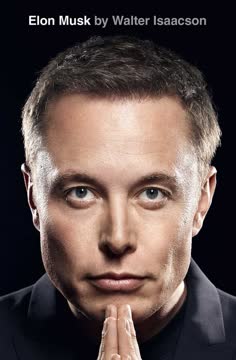

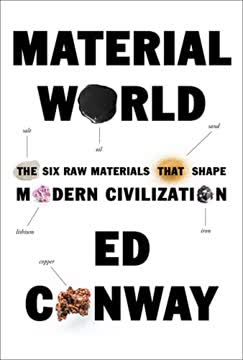
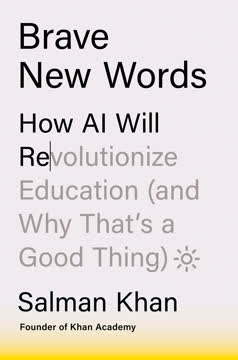



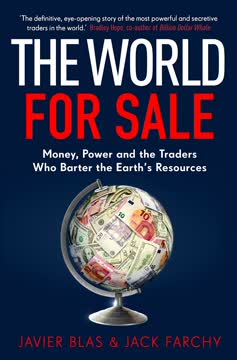
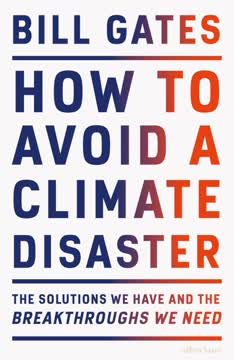

Download PDF
Download EPUB
.epub digital book format is ideal for reading ebooks on phones, tablets, and e-readers.







